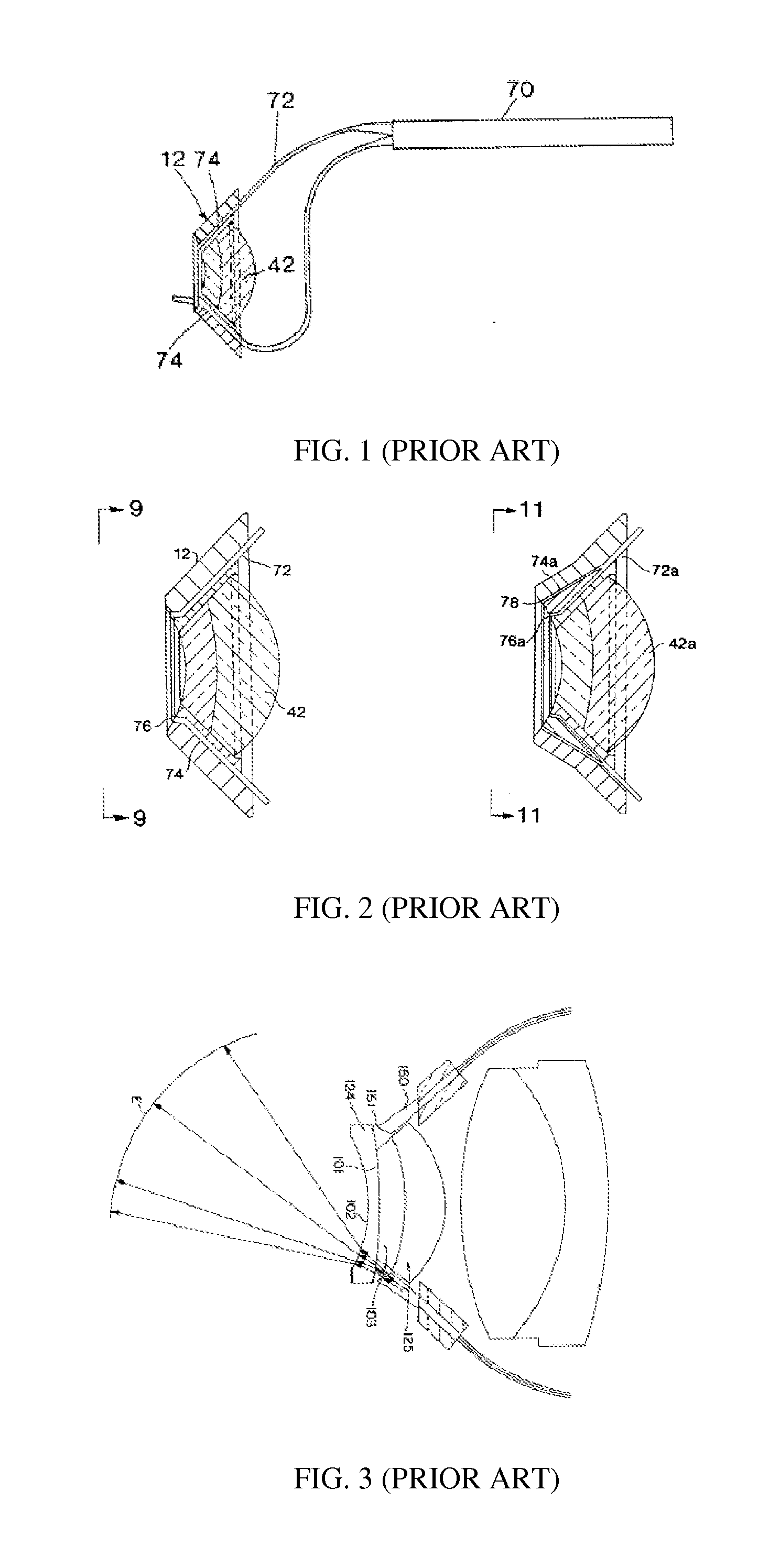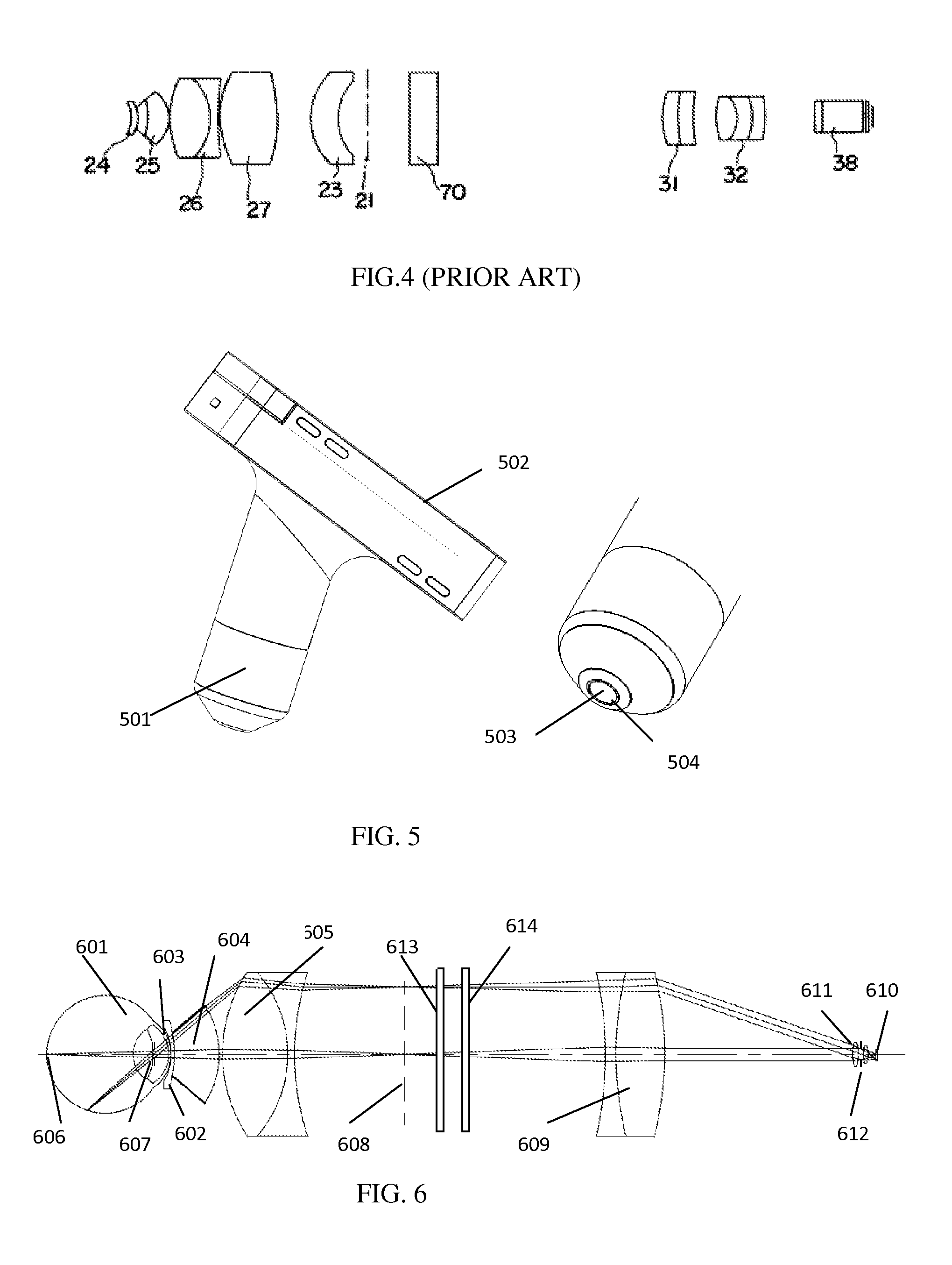Imaging and lighting optics of a contact eye camera
a technology of contact eye and imaging camera, which is applied in the field of ophthalmic examination equipment, can solve the problems of limited design of light conditioning optics, unique manufacturing process difficulties, and difficulty in achieving reliable sealing of contact optics
- Summary
- Abstract
- Description
- Claims
- Application Information
AI Technical Summary
Benefits of technology
Problems solved by technology
Method used
Image
Examples
first embodiment
[0047]Solid state light emitting devices are used as the light sources in the imaging apparatus discussed in this invention. In the imaging apparatus, as shown in FIG. 16, the light sources 1603 are placed directly against the light conditioning device 1602. The light source 1603 could include light emitting elements and heat sink which is used to disperse the heat generated by the emitters. The light from light sources is guided into the posterior of the eye through the device 1602 and optical window 1601 in the manners discussed in previous paragraphs. The light sources, together with the heat sink, are placed outside an inner shell 1606 which houses the optical imaging lenses, including the lens 1604. The light sources are powered electrically through the electric wires 1605 laying along the outer surface of the shell 1606. In case where the imaging apparatus is designed with two separated sections, an electric connector 1607 is used to interconnect the wires 1605 and the wires 1...
second embodiment
[0048]The location of the light sources shown in FIG. 16 should be distributed evenly in order to provide uniform illumination on the retina. The numbers of the light sources in need could vary, depending on the requirement of the particular application. Two embodiments of the design are demonstrated in FIG. 17, where a total of 8 and 4 light sources are used. In one embodiment, the light emitting elements 1702 is mounted onto a heat sink 1701 which forms a ring to increase its mass and heat dispersion capability. 8 of the elements 1702 are distributed evenly on the heat sink. Those light sources could be lighted up simultaneously and be synchronized with the shutter of the image sensor. It is important to point out that more or less numbers of light elements could be used, even to the point where the light sources actually form a linear line source. In the second embodiment, only 4 light emitting elements 1704, 1705, 1706, 1707 are used and mounted onto the heat sink 1703. Those li...
PUM
 Login to View More
Login to View More Abstract
Description
Claims
Application Information
 Login to View More
Login to View More - R&D
- Intellectual Property
- Life Sciences
- Materials
- Tech Scout
- Unparalleled Data Quality
- Higher Quality Content
- 60% Fewer Hallucinations
Browse by: Latest US Patents, China's latest patents, Technical Efficacy Thesaurus, Application Domain, Technology Topic, Popular Technical Reports.
© 2025 PatSnap. All rights reserved.Legal|Privacy policy|Modern Slavery Act Transparency Statement|Sitemap|About US| Contact US: help@patsnap.com



